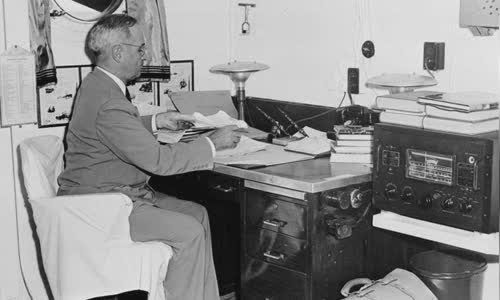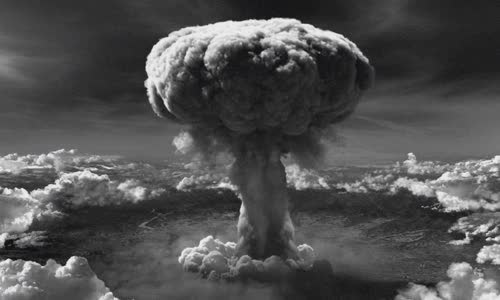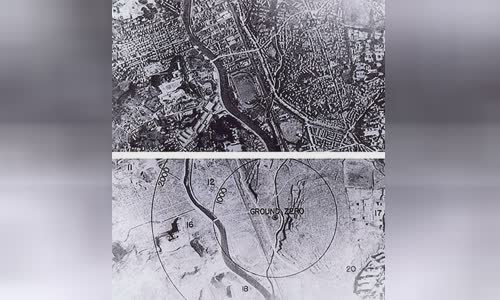President Truman's decision to throw two atomic bombs on Hiroshima and Nagashaki was heavily influenced by political calculations both in the United States and Japan.
On August 9, 1945, B-29 bombers led by Major Charles Sweeney dropped 21-kilogram Fat Man atomic bombs on the city of Nagasaki, southern Japan.

President Truman read the first atom bomb report Photo: AP
"Urakami Hill has completely disappeared, the bodies were burned, bones piled up on the ground and people walked lifelessly through the rubble," author Susan Southart described the horrific scene of destruction.
Just three days earlier, the United States dropped the first atomic bomb on Hiroshima with a destructive force of 13 kilotons, killing 90,000 people shortly afterwards, and 90% of the city's houses were destroyed.
Questions about President Harry Truman's decision to throw two atomic bombs on Japan are still being posed many years after that fateful day.
Truman denied both theories.
On July 6, 1945, while preparing for the Potsdam Conference, the Joint Intelligence Committee of the Joint General Staff had drafted the top secret document, "Assessing the enemy", including a review of the
"Ruling groups in Japan are aware of the current hopeless military situation and increasingly desire to make concessions for peace, but still believe that unconditional surrender is unacceptable.
Truman believed that Japan's unconditional surrender would keep the Soviet Union from joining the Allies, while reassuring American voters and soldiers that their sacrifice in the war would pay off.

The atomic bomb dropped on Hiroshima on August 6, 1945 Photo: C? quan L?u tr? Qu?c gia M?.
In the book, Gallicchio decided that the atomic bombs on Hiroshima and Nagasaki were the result of controversies in domestic policy of both the United States and Japan.
In the United States, Truman argued that disarming the army of the enemy was only the beginning and the goal the US aims to strengthen democracy outside the United States.
Truman used the Potsdam Declaration to remind the Japanese people that if they tried to prolong the war, the consequences would be even more catastrophic.
However, the Japanese authorities are not in a hurry.
Moreover, due to no guarantee of his own safety, Emperor Hirohito favored going to the Soviet Union instead of the United States.
Even when the first atomic bomb was dropped on Hiroshima, Emperor Hirohito still asked the Japanese government to seek concessions from the Allies.
When the second atomic bomb was dropped on Nagasaki, the illusion of Japanese leaders about a peace agreement "completely evaporated".

Nagasaki city of Japan before and after the bombing Photo: T? li?u Qu?c gia M?.
In the end, the Emperor decided to intervene and veto the military generals following a tough line.
While many Japanese people feel bewildered and frustrated, they still accept the Emperor's decree and "endure even the unbearable".
Therefore, Admiral William D. Leahy has criticized that with the atomic bombing of Japan, the US had "accepted a moral standard similar to the barbarians in dark ages."
At that time, however, the Soviet Union's entry into Manchuria greatly affected President Truman's decision.
James Byrnes, President Truman's foreign minister since early July 1945 and also his closest adviser during his early days in power, and General Leslie Groves, who was behind the Manhattan Project developing the atomic bomb for
"Some studies have shown that the US wants to try the atomic bomb to show off its strength and gain diplomatic advantage in the post-World War II period," said Sumiteru Taniguchi, who survived two US atomic bombs.
Taniguchi also asserted that "nuclear weapons are weapons of destruction" and when he died in August 2017, exactly 72 years after that horrific event, his anger still did not subside.



 Ester Jamisola
Ester Jamisola







